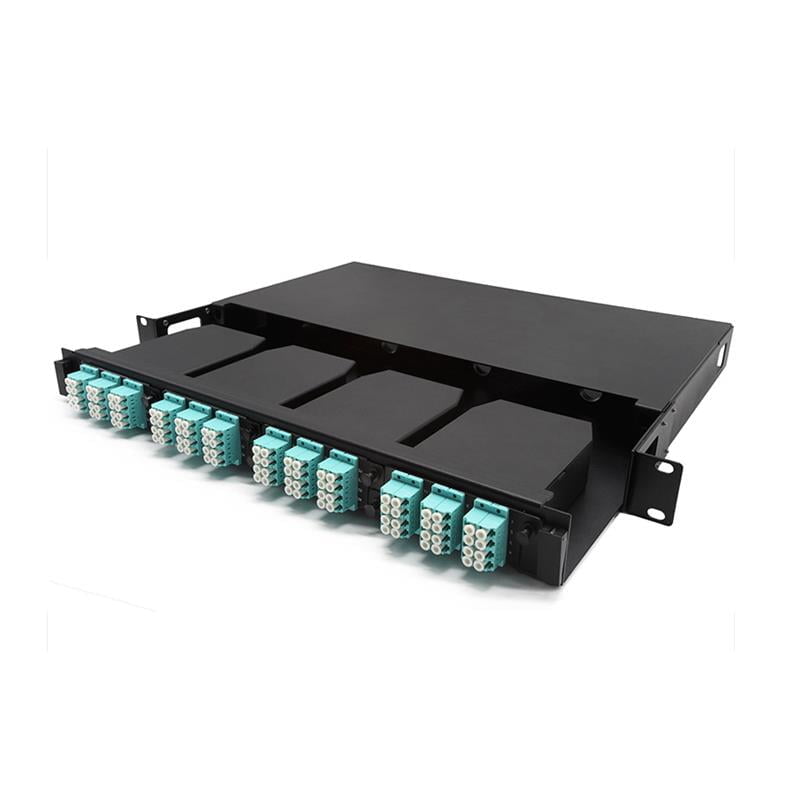How To Choose Patch panel?
Patch panel has two kinds which are wall-mounted and rack-mounted versions. As surmounting trouble rises, an optical fiber technician must choose the most suitable patch panel for the situation. What should be recognized is which involves easy installation, proper termination, and long-term maintenance, because not all patch panels are made equally.
Fiber optic cable is robust and for that reason deserves some kind of special treatment. For example, if a horizontal copper cable is damaged, one user will be affected, while if a backbone fiber optic cable goes down, it will take lots of users down by using it. For this reason, using fully enclosed connecting hardware (fiber optic patch panel) for optical fiber cable is crucial. And it is even the reason why technician must choose from using wall-mounted or rack-mounted hardware. The optical fiber density required will likely influence the technicians’ choice between the wall-mounted and rack-mounted connectivity. As fiber patch cord types used by many technicians are various, choosing the right patch panel involves being considered a common thing.

Difference Between Wall Mount And Rack Mount Patch Panel
- Wall mount patch panel is compatible with the fiber optic cable count generally as much as 24 fibers, and may extend to as many as 144 fibers through small form factors and high-density connectors. Wall-mount patch panels offer the benefit of reduced space on the floor requirements.
- Rack mount patch panel may be used with higher fabric counts or depending on the proximity to communications equipment where rack-mounted patch panels are preferable. 1U patch panels are designed for as much as 24 optical fiber cables with ST or SC connectors, or as much as 48 optical fibers by utilizing small form factor connectors. For extra protection, 2U to 4U patch panels can be used to handle as much as 144 optical fiber connections.
In an MPO cable, a 12 fiber MPO connector can speed installation time and increase the concentration of connection hardware. The factory terminated and tested cassettes look after breaking out the optical fibers from the MPO connectors to ST, SC, or MT-RJ connectors. The MPO cassette can double the amount concentration that is possible in rack-mount patch panels, up to 72 optical fibers in a 1U patch panel and 288 optical fibers inside a 4U patch panel, making these optical fibers perfectly fit to satisfy high-density applications, such as data centers and storage space networks.
Accessibility is an issue for very long-term maintenance when selecting a rack-mount patch panel. The 1U patch panels may have an access panel to achieve the rear optical fibers, while larger patch panels could have a removable rear cover with adequate room inside to create changes or perform repairs. Strain relief and loop management for incoming cables should be provided, nonetheless, management devices should be sufficiently small as to not interfere with accessibility optical fibers. Cable management for patch cords should be provided on the front of the patch panel with clear front covers and labeling arranged to ease moves, adds and changes and by ensuring that port identification is not obscured by patch cords.
Since copper patch panels need to be sufficiently strong not to flex an excessive amount of because the cables are punched down. The rolled edges around the panel sheet metal stock help to make the patch panels rigid.
Copper patch panels should provide 24 ports in a 1U height or 48 ports inside a 2U height. It is essential to make sure that the modular jacks and circuit traces on the panels are safe from debris that can short out circuits. All cable management systems must be simple to use and keep to avoid any potential problems.
